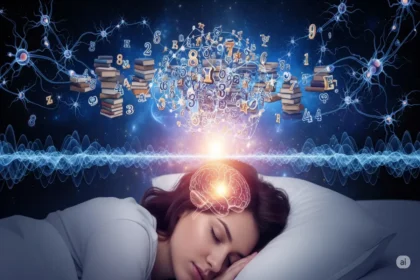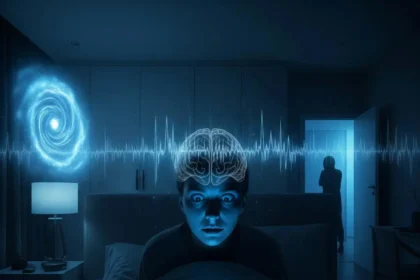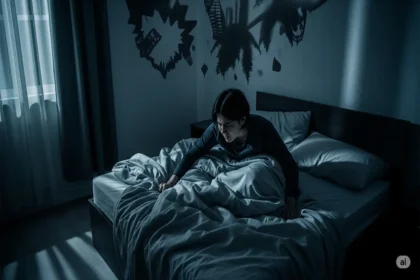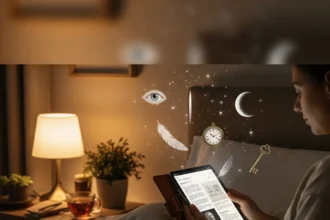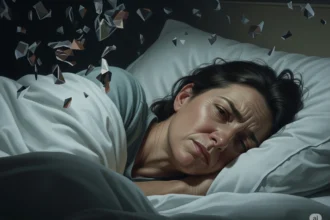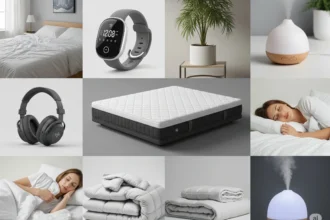The hum of modern life is relentless. From the glow of our smartphones to the endless demands of work and family, it often feels like we’re in a perpetual race against time. And somewhere in that race, sleep – that essential, restorative third of our lives – often gets sidelined, or worse, becomes another source of anxiety. We yearn for it, we chase it, and yet, for many, a good night’s rest remains an elusive dream. But what if the secret to unlocking truly profound sleep wasn’t about a magic pill or an elaborate gadget, but about a series of consistent, deliberate practices that tune your body and mind for rest? This is where the Ultimate Guide to Sleep Hygiene steps in, offering a foundational framework for your best rest, not just tonight, but every night.
Think of sleep hygiene not as a rigid set of rules, but as a commitment to creating the optimal conditions for sleep to naturally unfold. Just as personal hygiene keeps your body healthy, sleep hygiene keeps your sleep system robust. It’s about building a consistent routine and a sleep-friendly environment that signals to your body and brain: “It’s time to rest.” Many people overlook these fundamental steps, jumping straight to supplements or medications, when often, the most powerful interventions are the simplest.
1. The Bedrock of Rest: Consistency is King (and Queen)
If there’s one pillar upon which the entire edifice of good sleep hygiene rests, it’s consistency. Our bodies, in their profound wisdom, are governed by an internal 24-hour master clock called the circadian rhythm. This rhythm thrives on regularity, dictating not just when we feel sleepy, but also regulating hormones, body temperature, and countless other physiological processes.
- The Science: When you go to bed and wake up at roughly the same time every day, even on weekends, you reinforce this internal clock. Your body learns to anticipate sleep onset and wakefulness, leading to a smoother release of melatonin in the evening and cortisol in the morning. This predictability helps you fall asleep faster and wake up feeling more refreshed. Conversely, a chaotic sleep schedule, often referred to as “social jet lag” (when weekend sleep patterns differ significantly from weekdays), throws your circadian rhythm into disarray, making it harder to initiate and maintain sleep, and potentially impacting metabolic health and mood over time. Research published in Current Biology highlights how inconsistent sleep schedules can lead to a misaligned circadian rhythm, impacting overall health.
- The Anecdote: Consider David, a busy entrepreneur who used to pride himself on his flexibility, sometimes going to bed at 10 PM, sometimes at 2 AM. He often felt a lingering brain fog and struggled to focus. It wasn’t until his doctor, a strong advocate for sleep consistency, challenged him to stick to a strict 11 PM bedtime and 7 AM wake-up, seven days a week. “It felt restrictive at first,” David admitted, “but within two weeks, I was falling asleep effortlessly and waking up before my alarm, feeling truly energized. It was like I finally understood how my body was meant to work.”
2. The Power of Darkness: Embrace Your Inner Cave Dweller
Light, particularly bright and blue-spectrum light, is the most powerful external cue that tells your body it’s daytime. In our modern world, we are constantly bathed in artificial light, long after the sun has set, sending confusing signals to our internal clocks.
- The Science: When light hits specialized photoreceptors in your eyes, it sends a signal to your brain’s suprachiasmatic nucleus (SCN), which in turn suppresses the production of melatonin, the hormone that signals to your body it’s time to wind down and prepare for sleep. Blue light, specifically, is the most effective at inhibiting melatonin release. Even dim room light can have a significant impact. Research from Harvard University has shown that exposure to blue light at night can suppress melatonin for twice as long as green light and shift circadian rhythms by twice as much.
- The Practice:
- Dim the lights: As evening approaches (ideally 2-3 hours before bed), start dimming the lights in your home. Use warmer-toned bulbs (lower Kelvin ratings) or lamps instead of bright overhead lights.
- Go dark on screens: This is crucial. Avoid smartphones, tablets, laptops, and e-readers with backlit screens for at least 1-2 hours before bed. If you must use them, activate blue-light filters or wear blue-light blocking glasses.
- Blackout your bedroom: Make your bedroom as dark as possible. Invest in blackout curtains or blinds that block all external light. Cover any small LED lights from chargers, alarms, or electronic devices with electrical tape or small covers.
- The Anecdote: Sarah, a night owl, loved scrolling through social media in bed until she finally succumbed to exhaustion. She was often awake for hours after putting her phone down. When she implemented a strict “no screens in the bedroom” rule and invested in blackout blinds, the transformation was remarkable. “It was like flipping a switch,” she recounted. “My body just relaxed. I realized how much that glowing screen was keeping my brain wired.”
3. The Goldilocks Zone: Optimize Your Bedroom Environment
Your bedroom should be a sanctuary dedicated to sleep and intimacy, free from distractions and optimized for comfort. It’s about creating a personal “sleep cave.”
- The Science:
- Temperature: Your core body temperature naturally dips as you prepare for sleep and remains lower throughout the night. A room that’s too warm can hinder this natural cooling process, leading to fragmented sleep and difficulty falling asleep. Most sleep experts recommend a temperature between 18-20°C (65-68°F).
- Sound: Our brains continue to process sounds even during sleep, and sudden or loud noises can pull us out of deeper sleep stages or cause micro-arousals we don’t even remember.
- Comfort: A comfortable mattress and pillows that support your spine are fundamental.
- The Practice:
- Cool it down: Set your thermostat to the ideal range. Use fans or open windows if needed (provided outside noise isn’t an issue).
- Silence is golden (mostly): Eliminate noise. Use earplugs, a white noise machine (which can mask unpredictable noises with a consistent, soothing hum), or consider soundproofing measures if external noise is a significant problem.
- Comfort is key: Ensure your mattress and pillows are supportive and comfortable. Choose breathable bedding materials like cotton or linen.
- Declutter: Keep your bedroom tidy and free of clutter. Visual clutter can contribute to mental clutter and stress.
- The Anecdote: Mark, a perpetually restless sleeper, discovered his ideal sleep temperature was cooler than he’d ever imagined. He used to keep his room quite warm, thinking it was cozy. Once he lowered the thermostat and invested in a breathable mattress topper, he found himself sleeping through the night without waking up sweaty or agitated. “It felt counterintuitive at first,” he said, “but the cool air just signals ‘sleep’ to my body.”
4. Mind What You Ingest: Food, Drink, and Stimulants
What you consume throughout the day, especially in the hours leading up to bedtime, can profoundly impact your sleep quality.
- The Science:
- Caffeine: A powerful stimulant that blocks adenosine, a neurotransmitter that promotes sleep. Its half-life means it can remain in your system for many hours. Even afternoon caffeine can disrupt sleep.
- Alcohol: While it might initially make you feel drowsy, alcohol disrupts sleep architecture, particularly REM sleep, leading to more fragmented and less restorative sleep in the latter half of the night.
- Heavy Meals: Eating a large, rich meal close to bedtime can lead to indigestion and discomfort, as your digestive system works hard when it should be winding down.
- Nicotine: A stimulant that can lead to lighter sleep and early morning awakenings.
- The Practice:
- Caffeine cutoff: Avoid caffeine at least 6-8 hours before bedtime. For some sensitive individuals, this window may need to be even longer.
- Alcohol in moderation (if at all): Limit or avoid alcohol in the evening, especially within 3-4 hours of sleep.
- Light dinners: Aim for your last substantial meal 2-3 hours before bed. If you need a snack, choose something light and easily digestible, like a small banana or a handful of almonds.
- Quit smoking: This offers numerous health benefits, including improved sleep.
- The Anecdote: Emily, a university student, used to rely on a late-afternoon espresso to power through her studies. She’d then find herself staring at her ceiling for hours. Once she shifted her caffeine consumption to only mornings and opted for herbal tea in the evenings, she noticed a drastic improvement in her ability to fall asleep naturally.
5. Movement Matters: Exercise Wisely
Regular physical activity is a cornerstone of overall health, and it plays a significant role in promoting healthy sleep.
- The Science: Exercise helps to reduce stress and anxiety, which are common barriers to sleep. It can also deepen the restorative stages of sleep. Studies consistently show that physically active individuals report better sleep quality and shorter sleep latency (time to fall asleep). However, the timing of exercise matters. Intense exercise too close to bedtime can be counterproductive, as it raises your core body temperature and stimulates your nervous system, making it harder to wind down.
- The Practice:
- Aim for regular activity: Incorporate at least 30 minutes of moderate-intensity exercise most days of the week.
- Time it right: Schedule your workouts earlier in the day, ideally in the morning or early afternoon. If you must exercise in the evening, opt for lighter activities like gentle yoga or a leisurely walk, and try to finish at least 3 hours before bed.
- The Anecdote: Michael, a middle-aged office worker, struggled with restless leg syndrome and fragmented sleep. He started a routine of morning walks before work. While he didn’t feel an immediate change, after a few weeks, he noticed his evenings felt more relaxed, and he was able to fall into a deeper, more continuous sleep. His physical activity acted as a gentle, natural sedative.
6. The Wind-Down Ritual: Signal Sleep to Your Brain
Our brains thrive on routine and prediction. Creating a consistent, calming pre-sleep ritual signals to your brain that it’s time to shift gears from active engagement to passive relaxation, preparing for sleep.
- The Science: This ritual helps to activate your parasympathetic nervous system (the “rest and digest” system) and down-regulate your sympathetic nervous system (the “fight or flight” system). It provides a mental and physical buffer between the day’s activities and the stillness of sleep, allowing your mind to gradually detach from worries and stimulation. This process promotes the natural release of melatonin and reduces cortisol levels.
- The Practice:
- Choose calming activities: This might include reading a physical book, taking a warm bath or shower (the cooling effect after stepping out can be soporific), listening to soothing music, practicing gentle stretching or restorative yoga, journaling to clear your mind, or engaging in quiet conversation.
- Avoid stimulating activities: Steer clear of work, emotionally charged conversations, intense television shows, or stressful news.
- Consistency is key: Perform your chosen ritual every night. The repetition creates a powerful association between the activities and sleep.
- The Anecdote: Jessica, a new mom, found her evenings chaotic. She would crash into bed exhausted but mentally wired. She started a simple 20-minute ritual: a warm shower, followed by a cup of herbal tea and 10 minutes of journaling about her day. “It became my sacred time,” she shared. “It allowed me to process everything before bed instead of in bed. The ritual became my mental off-ramp to sleep.”
The Journey to Your Best Rest
The concept of sleep hygiene isn’t about perfection; it’s about progress. It’s about recognizing that sleep isn’t a passive state, but an active, vital process that deserves our mindful attention. Integrating these six steps into your daily and nightly routines can feel like a significant shift, but the rewards are immeasurable.
Imagine waking up feeling truly refreshed, energized, and ready to embrace the day, rather than dragging yourself out of bed. Imagine a mind that is clear, a mood that is stable, and a body that feels restored. This isn’t just a pipe dream; it’s the profound reality that consistent, thoughtful sleep hygiene can unlock. So, tonight, as the day winds down, consider embarking on this transformative journey. Your well-rested self, and every facet of your life, will thank you for it.
Disclaimer: The information provided in this article is for general informational purposes only and does not constitute medical advice. It is not a substitute for professional medical advice, diagnosis, or treatment. Always seek the advice of your physician or other qualified health provider with any questions you may have regarding a medical condition. Never disregard professional medical advice or delay in seeking it because of something you have read on this website.




